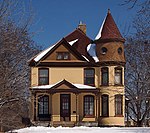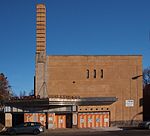Silver Lake Village
1961 establishments in Minnesota2004 disestablishments in MinnesotaBuildings and structures demolished in 2004Demolished buildings and structures in MinnesotaShopping malls disestablished in 2004 ... and 4 more
Shopping malls established in 1961Shopping malls established in 2004Shopping malls in Hennepin County, MinnesotaShopping malls in Minnesota

Silver Lake Village is a mixed-use development in the city of St. Anthony, Minnesota, United States. It was constructed beginning in 2004 as a $150 million plan to replace Apache Plaza, an aging enclosed mall. Its design is meant to resemble a "walkable community", as its development includes housing, shopping, dining, and other services. Its name is derived from Silver Lake, located just north of the development, and from St. Anthony's nickname of "St. Anthony Village". Silver Lake Village is located along Silver Lake Road, north of 37th Ave NE. It is served by Metro Transit routes 4, 25, and 801.
Excerpt from the Wikipedia article Silver Lake Village (License: CC BY-SA 3.0, Authors, Images).Silver Lake Village
39th Avenue Northeast,
Geographical coordinates (GPS) Address Nearby Places Show on map
Geographical coordinates (GPS)
| Latitude | Longitude |
|---|---|
| N 45.038936 ° | E -93.22101 ° |
Address
39th Avenue Northeast 2716
55421
Minnesota, United States
Open on Google Maps








